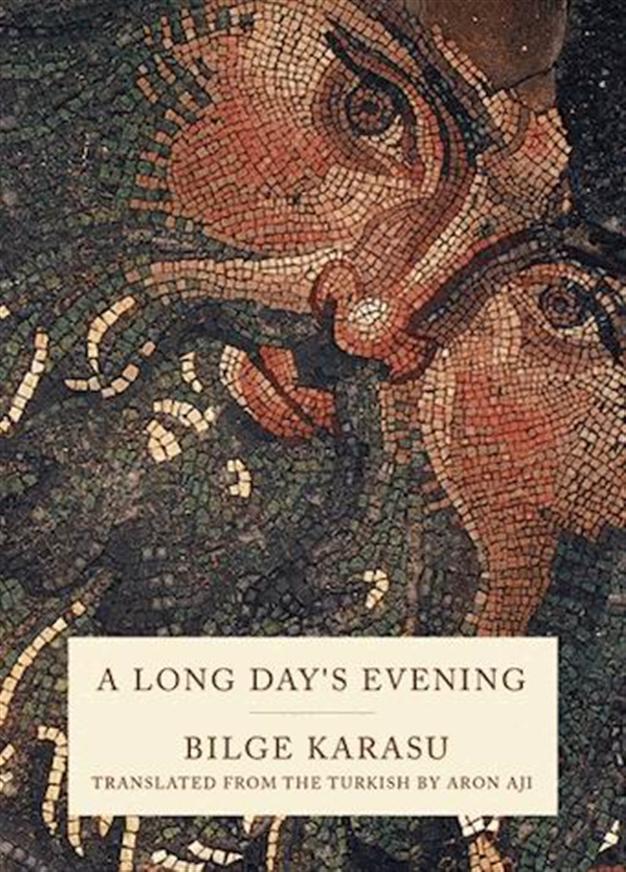‘A long day’s evening’ from Byzantium to modern Turkey
William Armstrong - william.armstrong@hdn.com.tr
 ‘A Long Day’s Evening’ by Bilge Karasu (City Lights Books, 2012, 27TL, pp 167)
‘A Long Day’s Evening’ by Bilge Karasu (City Lights Books, 2012, 27TL, pp 167)Bilge Karasu’s unconventional 1970 novel, “A Long Day’s Evening,” is divided into three sections. The first two take place during the reign of the 8th century Byzantine Emperor Leo III, focusing on two Constantinople monks after the cataclysmic upheaval that followed the imperial edict forbidding the use of icons in the Eastern Orthodox Church. The final, shorter appendage jumps forward to the 20th century, with the narrator reflecting on his family’s experiences in pre-war Italy and contemporary Turkey, shortly after the first military coup in the Turkish republic’s history. Although ostensibly unrelated, this final section acts as a kind of coda to the previous two, striking thematic echoes around the fate of personal spirits affected by conflicts waged from above, and the tensions between freedom and loyalty, personal faith and dogma, doubt and certainty. Taken as a whole, the book is by no means a historical thriller, but it does manage to be both emotionally engaging and intellectually satisfying.
The first part of the text, “Island,” follows the monk Andronikos’ flight from Constantinople to a remote, little-inhabited island outside the city, exiling himself due the Church’s newly introduced iconoclasm. Physical descriptions of Andronikos’ arrival and first steps alone on the island are balanced with tortured reflections on what he has left behind and what lies ahead; unsettling questions of faith and disloyalty torture his mind.
The second section, “Hill,” is set years later, and follows the aged Ioakim, a former monk at the same monastery. Also in exile, despite the iconoclastic era having ended, Ioakim’s narrative is somehow both more reflective and more disjointed. It elaborates – albeit rather cryptically – the events of the intervening years, the circumstances around Andronikos’ departure, his return, his death, and the conflicted relationship that had existed between the two monks.
Both chapters are acutely self-conscious, even solipsistic, and it would be easy for such a postmodern conception of the “self” to clash awkwardly with the profoundly different understanding of individual will that was current in 8th century Byzantium. However, Karasu unfurls the text with such assuredness, (and the excellent English translation is so transparent), that such concerns never impose themselves. It is such an involving read, and the acuteness of the two characters’ dilemmas is so convincingly drawn, that the reader never finds space to dwell on such potential inconsistencies. In a way, “A Long Day’s Evening” succeeds where Orhan Pamuk (sometimes) fails – in managing to combine sophisticated philosophical rumination with a storyline that the reader actually cares about. This is achieved despite the fact that little in the way of traditional “plot” actually takes place.
Although it is usually worse than unhelpful to read a literary text simply in order to illuminate its author’s biography, it is difficult to ignore Karasu’s background when considering “A Long Day’s Evening.” Born to an Eastern Orthodox mother and a Jewish father in the early years of the Turkish Republic, the conflict between public precepts and individual faith was perhaps more than just an abstract concept for him. The third section of the book brings this into sharper focus, finding modern resonances in 20th century Italy and Turkey and thus linking an enduring dilemma across the centuries. Although the self-conscious narrative self may be a modern phenomena, “A Long Day’s Evening” powerfully illustrates that the tension between the personal spirit and the public imperative is a timeless one.
Recommended recent release

(MacLehose Press, 35TL, pp 336)










